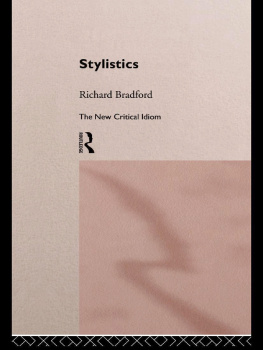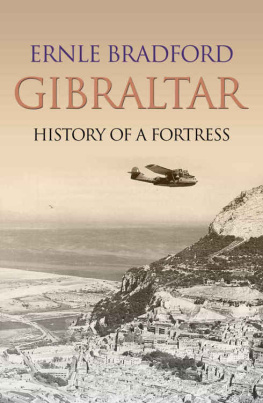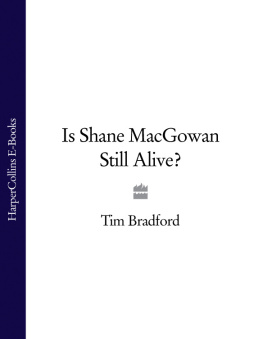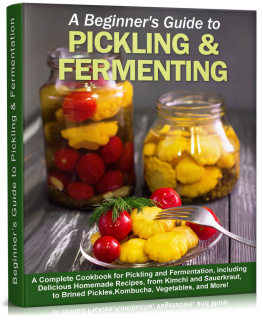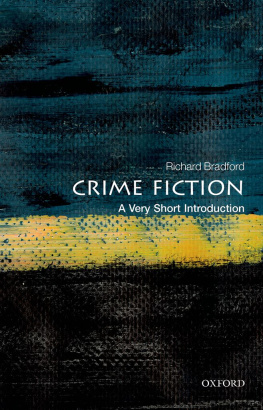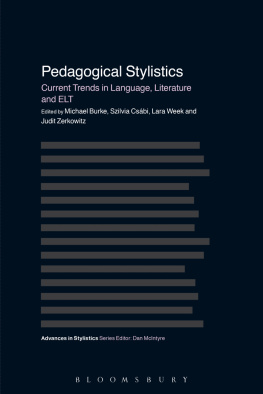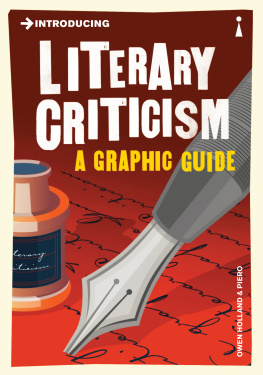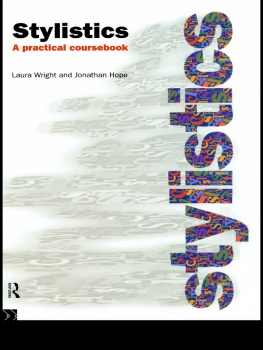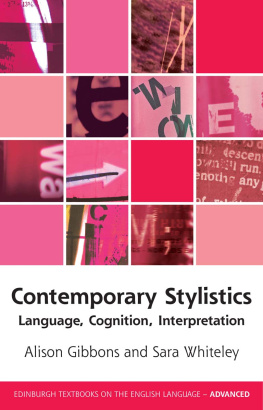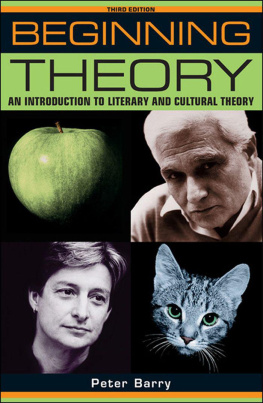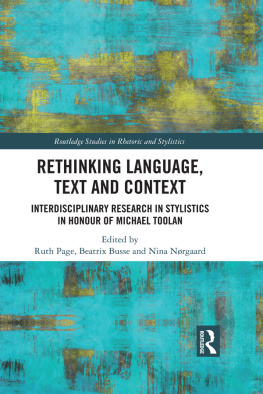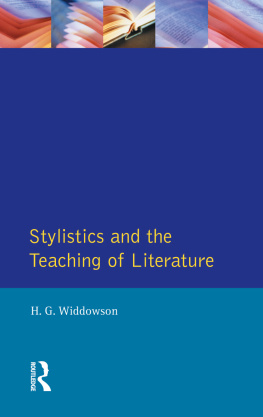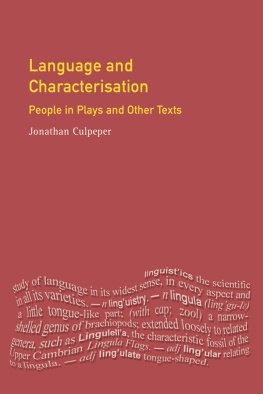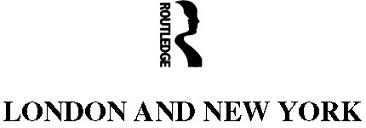With a strong emphasis on clarity, lively debate and the widest possible breadth of examples, The New Critical Idiom is an indispensable approach to key topics in literary studies.
First published 1997
by Routledge
11 New Fetter Lane, London EC4P 4EE
This edition published in the Taylor & Francis e-Library, 2005.
To purchase your own copy of this or any of Taylor & Francis or Routledges collection of thousands of eBooks please go to www.eBookstore.tandf.co.uk.
Simultaneously published in the USA and Canada
by Routledge
29 West 35th Street, New York, NY 10001
1997 Richard Bradford
All rights reserved. No part of this book my be reprinted or reproduced or utilized in any form or by any electronic, mechanical, or other means, now known or hereafter invented, including photocopying and recording, or in any information storage or retrieval system, without permission in writing from the publishers.
British Library Cataloguing in Publication Data
A catalogue record for this book is available from the British Library
Library of Congress Cataloging in Publication Data
Bradford, Richard
Stylistics / Richard Bradford.
p. cm.(The new critical idiom)
Includes bibliographical references.
1. Style, Literary. I. Title. II. Series.
PN203.B68 1997
809dc20 9627990
CIP
ISBN 0-203-99265-2 Master e-book ISBN
ISBN 0-415-09768-1 (Print Edition)
0-415-09769-X (pbk)
eISBN: 978-1-13486-068-5
To Jennifer Ford
ACKNOWLEDGEMENTS
I am grateful to the Faculty of Humanities and the School of English, University of Ulster, for providing me with the time to finish this book, and to John Drakakis, a scrupulous editor.
The author and publisher are grateful for the permission to reproduce extracts from T.S.Eliot, Collected Poems 19091962, reprinted courtesy of Faber & Faber Ltd. Every effort has been made to obtain permission to use copyright material in this book. Please contact the publisher if any omissions have inadvertently occurred.
SERIES EDITORS PREFACE
The New Critical Idiom is a series of introductory books which seeks to extend the lexicon of literary terms, in order to address the radical changes which have taken place in the study of literature during the last decades of the twentieth century. The aim is to provide clear, well-illustrated accounts of the full range of terminology currently in use, and to evolve histories of its changing usage.
The current state of the discipline of literary studies is one where there is considerable debate concerning basic questions of terminology. This involves, among other things, the boundaries which distinguish the literary from the non-literary; the position of literature within the larger sphere of culture; the relationship between literatures of different cultures; and questions concerning the relation of literary to other cultural forms within the context of interdisciplinary studies.
It is clear that the field of literary criticism and theory is a dynamic and heterogenous one. The present need is for individual volumes on terms which combine clarity of exposition with an adventurousness of perspective and a breadth of application. Each volume will contain as part of its apparatus some indication of the direction in which the definition of particular terms is likely to move, as well as expanding the disciplinary boundaries within which some of these terms have been traditionally contained. This will involve some re-situation of terms within the larger field of cultural representation, and will introduce examples from the area of film and the modern media in addition to examples from a variety of literary texts.
INTRODUCTION
Stylistics is an elusive and slippery topic. Every contribution to the vast and multifaceted discipline of literary studies will involve an engagement with style. To accept that the subject of our attention or our critical essay is a poem, a novel or a play involves an acceptance that literature is divided into three basic stylistic registers. Even a recognition of literary studies as a separate academic sphere is prefigured by a perceived distinction between literary and non-literary texts. Stylistics might thus seem to offer itself as an easily definable activity with specific functions and objectives: Stylistics enables us to identify and name the distinguishing features of literary texts, and to specify the generic and structural subdivisions of literature. But it is not as simple as this.
When we use or respond to language in the real world our understanding of what the words mean is supplemented by a vast number of contextual and situational issues: language is an enabling device; it allows us to articulate the sequence of choices, decisions, responses, acts and consequences that make up our lives. Style will play some part in this, but its function is pragmatic and purposive: we might admire the lucid confidence of the car advertisement or the political broadcast, but in the end we will look beyond the words to the potential effect of their message upon our day to day activities. The style and language of poems, novels and plays will frequently involve these purposive functions, but when we look beyond their effect to their context we face a potentially disorientating relation between what happens in the text and what might happen outside it.
Stylistics can tell us how to name the constituent parts of a literary text and enable us to document their operations, but in doing so it must draw upon the terminology and methodology of disciplines which focus upon language in the real world. The study of metre, narrative and dramatic dialogue is founded upon the fundamental units and principles of all linguistic usage: phonemes, rhythmic sequences, grammatical classes, forms of syntactic organization and so on. But these same fundamentals of communication also underpin the methodology of pure linguistics, structuralism and semiotics, discourse theory, sociolinguistics, gender studies, linguistic philosophy and a whole network of disciplines which involves the context and pragmatic purpose of communication. Consequently, modern stylistics is caught between two disciplinary imperatives. On the one hand it raises questions regarding the relation between the way that language is used and its apparent context and objectivelanguage as an active element of the real world. On the other, it seeks to define the particular use of linguistic structures to create facsimiles, models or distortions of the real worldliterary language.

